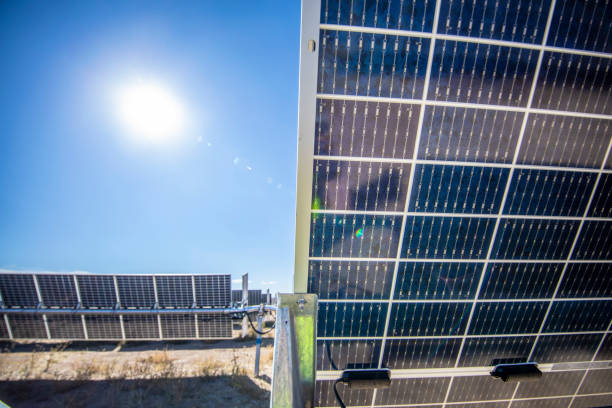
Solar panels are effective in producing excess electricity. But how exactly are they made? Solar panel manufacturing is a complex process that requires a great deal of knowledge and understanding. This blog will guide you through the manufacturing process and the different types of solar panels on the market.
Solar panels are composed of silicon solar cells that are monocrystalline or multi-crystalline. These are grouped together and then sealed with anti-reflective glasses. The photovoltaic effects start when light hits the solar cells.
Solar panels assemble six components: a junction box, backseat, encapsulant (a plastic shell), solar cells, tempered glass, and aluminum frames. Recent research and development in the solar energy sector have made it easier than ever to buy products for the home.
Now that you understand what makes a solar cell let’s examine each step in making solar panels.
Learn how solar panels work.
Solar Cells
Solar cells are the main building blocks of a solar panel. Solar cells are either p-type (positively or negatively charged) or n-type. Solar cells are created from silicon wafers, which are melted down and mixed with gallium (or boron) to develop solar ingots.
The electrical properties of silicon are then given by adding phosphorous, gallium, or boron.
A thin silicon layer is then cut and coated with an anti-reflective surface, allowing it to reflect sunlight away from structures instead of capturing it. The cells are then cut with thin current-conducting wires to move and catch the electrical current.
When sunlight hits the photovoltaic cell, electrons can drift inside the solar cell and create electricity.
Soldering solar cells together to create a solar panel
Metal connectors connect each solar cell to form a solar panel once phosphorus has given silicon wafers an electrical charge. Soldering is the process.
The number of cells that can be soldered simultaneously depends on each project’s needs and requirements. For example, 60-cell panels are standard, while 72-cell panels are used for commercial projects.
Installing a Backsheet, Front Glass, and Frame
What is the material of the solar panel’s back? Solar panels are made from a polymer or plastic mixture for the back sheet. A back sheet protects the solar cells.
The thin glass sheet installed on the top of the solar cells filters sunlight into the solar cell. These parts are all held together with ethylene vinyl-acetate glue (EVA). Metal frames are used to secure these components onto your roof.
Installation of the Junction Box
The junction box is then attached to the structure with a sealant and allowed to cure for 10-12 hours. A junction box’s primary purpose is to protect solar panel wires from damage to prevent electricity from flowing in the opposite direction. Junction boxes are essential for the correct functioning of solar panels.
Quality Test
Each solar panel is then put through a quality test to make sure it meets all the criteria. This includes outputs, efficiency, and other technical specifications promised by the manufacturer. The panels are tested under standard conditions to ensure the electric current flows through them.
Solar panels are also tested to see if they can withstand extreme weather conditions, heat, and wear and tear. You will only receive the best products when you buy solar panels for your home. It is ready to install if it passes the test.
Solar panels are manufactured similarly, but they each have their strengths.
What are the different types of solar panels?
Solar panels come in three types: monocrystalline, thin-film, and polycrystalline. Monocrystalline solar panels are among the most efficient and expensive panels, with an efficiency of approximately 15-20%.
Polycrystalline panels cost less than monocrystalline due to their lower efficiency. Thin-film solar panels are lightweight and best suit roofs with irregular shapes.
Summary
Solar energy can help reduce carbon emissions and rely on fossil fuels less. Do your research before buying solar technology from an unreliable company.
Genus Innovation provides high-quality solar panel installation services and has done so for years. This helps homeowners reduce their carbon footprint while also reducing energy bills. Our solar installers have the experience to make your home energy more environmentally friendly. Solar panels made by Genus are energy-efficient, cost-effective, and environment-friendly.
